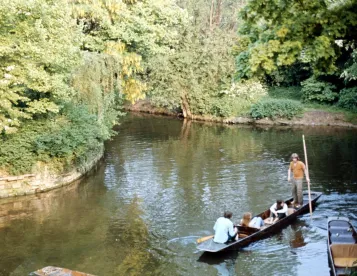The Wisconsin Department of Natural Resources (DNR) recently announced the creation of a new In-Lieu Fee Program (Program) as a mitigation option for authorized wetland fills in Wisconsin. This announcement followed a two-year period of negotiation with the U.S. Army Corp. of Engineers (ACOE), U.S. Environmental Protection Agency (EPA) and the DNR resulting in the execution of a Memorandum of Understanding (MOU) between the ACOE, DNR and EPA on Nov. 19, 2014. The Program provides an additional method of compensatory mitigation to offset unavoidable adverse impacts to wetland resources. To implement the Program, the DNR has created a new Wisconsin Wetland Conservation Trust (WWCT) which is intended to use credits sold to successful permit applicants as a method for compensatory mitigation in the project watershed.
I. Background
The Program is a creature of a Wisconsin statute that was enacted as part of a comprehensive reform of the wetland Chapter 30 program. Under Wisconsin Law 2012 Act 118, mitigation is now authorized if the applicant can meet all of the other substantive requirements to fill a wetland. In particular, if the applicant meets the alternative analysis under state and federal wetland laws, Act 118 creates a hierarchy of priorities. First the law requires the buying of credits from existing wetland mitigation banks that may exist in the basin where the wetland proposed to be filled exists. In the absence of any credits available in existing wetland mitigation banks, the Program authorizes the permit applicant to purchase credits from WWCT.
The Program is applicable to Wisconsin individual wetland permits approved under Wis. Stat. §281.36 as well as federal wetland permits issued under §404 of the Clean Water Act (CWA) and §10 of the Rivers and Federal Harbor Act of 1899. The new WWCT creates a watershed approach for making mitigation decisions that support the improvements of wetland resources in the basin. The Program focuses on the greatest watershed needs. Funds in the WWCT will be used to complete wetland mitigation projects in the watershed basin where authorized wetland fill projects are located.
II. Summary of the Program
The WWCT creates a statewide program for service areas and divides the state into 12 watershed service areas. These service areas are based on modified six-digit hydrologic unit codes (HUC). Advanced credits are allocated to each service area and are available for purchase for projects in each of the 12 HUC-6 service areas. These HUC-6 service areas are described below:
Figure 1. Service Areas
Service Areas (SA) are depicted below in 12 varying colors with corresponding HUC-6 names. Major HUC-4 basin boundaries are depicted with bold black outlines and HUC-4 Basin Names. The Ideal HUC-8 debit areas for siting projects are outlined and further described in the link below.
http://www.gklaw.com/public_document.cfm?id=4296&key=24G0 1
The MOU between EPA, ACOE and DNR requires that mitigation banks be implemented within three years of creation of the WWCT in the HUC-6 service areas that have been assigned advance credits. These advance credits are assigned to each service area based upon a needs analysis conducted for each of the 12 service areas. The advanced credits assigned to each of the 12 service areas are highlighted in the link below:
http://www.gklaw.com/public_document.cfm?id=4297&key=1H1 2
The Program also makes an important distinction between Advanced and Released Credits. Advanced Credits are available for sale prior to being fulfilled with an approved mitigation project. Release Credits are generated from an ACOE approved project as performance standards are met and are released per a credit release schedule. All Released Credits must first be used to replenish or "payback" previous Advanced Credit sales before additional Advanced Credits are made available in the HUC-6 service area.
The WWCT has established a general fulfillment schedule for these Advanced Credits. Credits will be released based upon a 2013 guidance which is performance based. Each project will have a specific release schedule. The Release Credits will be generated in accordance with the following link:
http://www.gklaw.com/public_document.cfm?id=4298&key=7I2 3
The credit fees have been established for the Program for 2015. The credit fees are identified in the link below, and are designed to roughly approximate a true cost accounting for creating new wetland banks and are designed so they do not undercut the private market for the creation of wetland mitigation banks.
http://www.gklaw.com/public_document.cfm?id=4299&key=13J3 4
Finally, credit ratios are established for the necessary credits to be purchased to compensate for the impacted wetland acres authorized by a wetland fill permit. In general, the WWCT credit ratios will be a 1.45:1 ratio. This means one acre of impact equals 1.45 credits that must be purchased. This is based upon the state minimum credit ratio of 1.2:1 + 0.25:1 increase for temporal loss of the wetlands before they are mitigated by the creation of an actual wetland mitigation project through the WWCT. Under this approach, the WWCT sells advanced credits prior to having wetland mitigation projects in a particular service area where credits are sold.
The WWCT will create new wetland mitigation projects for each service area within the three year window and has created two avenues for developing those projects. The first avenue will involve a solicitation of projects through an open Request for Proposal (RFP) process. The second alternative is a mitigation project developed by DNR. A strong preference is given to the open RFP process. Once an RFP has been developed by a sponsor (DNR), the proposed project must be submitted to the ACOE for approval.
After a mitigation project is developed through the WWCT, DNR is legally responsible for the long term management of these authorized projects. The DNR is authorized to provide protection by acquisition of the property through acquiring title, conservation easements or other appropriate land restrictions. The Program authorizes the transfer of ownership to non-profit NGO’s or another state or local government to administer. It is also possible to transfer the long term management to an authorized third party to ensure the proper long term performance of these wetland mitigation projects under the WWCT Program.
III. Opportunities created by the Program
The creation of the WWCT is an important step in implementing the Wisconsin law to authorize wetland fill permit projects by creating fee options where no such mitigation projects exist in the service area. It is important that applicants who are seeking wetland permits for fill projects analyze the availability of advanced credits for their projects in the absence of any private mitigation banks in the watersheds where the impacted wetlands exist.
In addition, developers who are interested in creating wetland mitigation projects in any of the 12 service areas where no wetland mitigation banks currently exist may have an opportunity to bid to develop these projects under the RFP process that is authorized by the WWCT.
This is a very innovative, but complex new Program. Anyone interested in more information about the Program should contact any member of the Godfrey & Kahn Environment & Energy Strategies team.
1 DNR, Wisconsin Wetland Conservation Trust (In-Lieu Fee Mitigation Program) Instrument, page 8, available at http://dnr.wi.gov/topic/Wetlands/documents/mitigation/WWCTFinalSignedInstrument.pdf.
2 Id. at 13.
3 DNR (Matt Matrise, Wetland In-Lieu Fee Coordinator) Presentation to Milwaukee Bar Association, Jan. 21, 2015.
4 DNR, Wisconsin Wetland Conservation Trust (In-Lieu Fee Mitigation Program) Instrument, supra, page 294.



 />i
/>i

